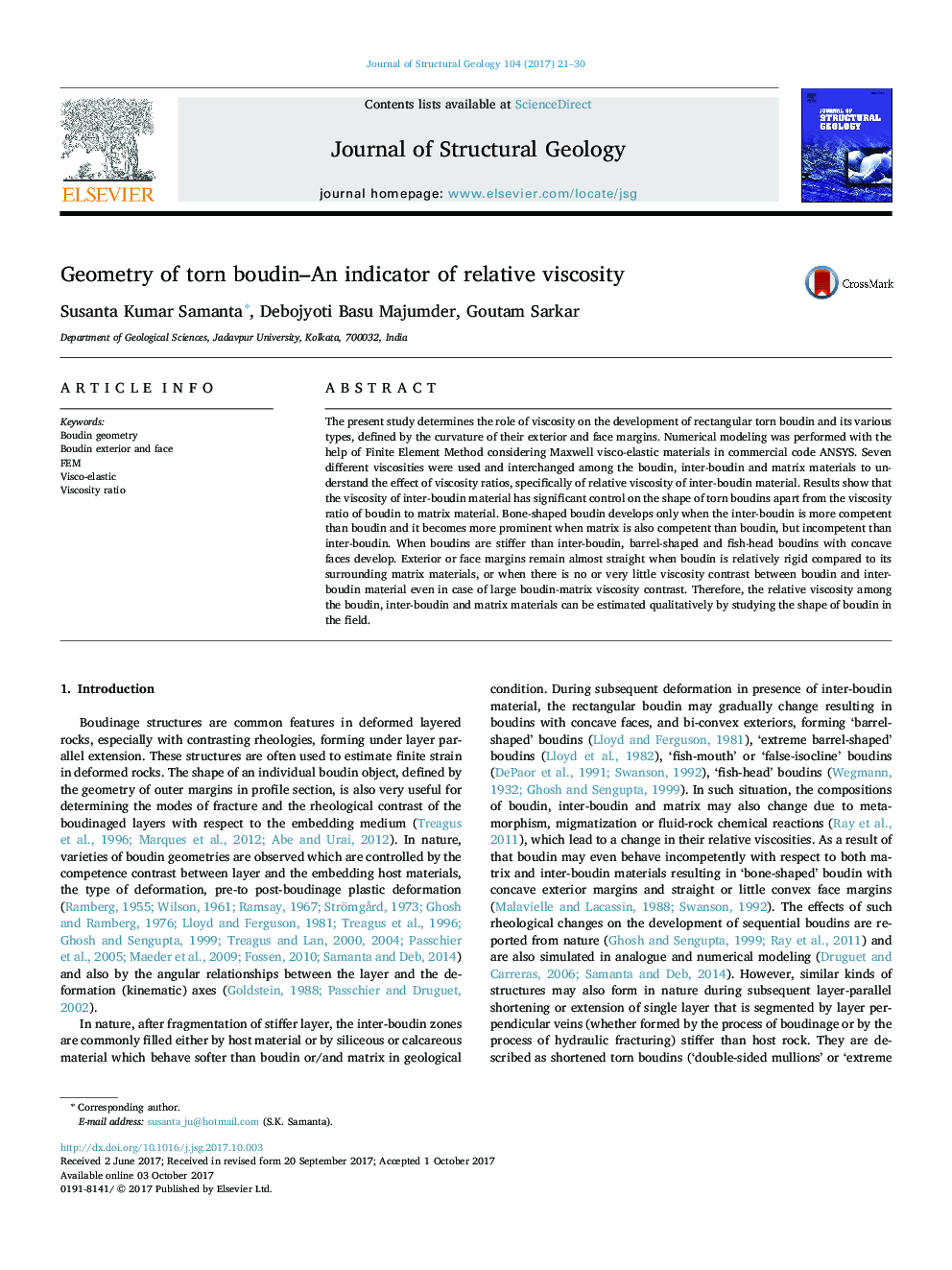| Article ID | Journal | Published Year | Pages | File Type |
|---|---|---|---|---|
| 5786232 | Journal of Structural Geology | 2017 | 10 Pages |
â¢Geometry of torn boudin is defined by the curvatures of exterior and face margins.â¢Forty-nine combinations of torn boudins were modeled in 2D-FEM simulation considering seven Maxwell visco-elastic materials.â¢Different combinations of boudin to matrix and inter-boudin to matrix viscosity ratios produce various types of torn boudins.â¢Apart from boudin to matrix viscosity ratio, boudin geometry is governed by the relative viscosity of inter-boudin material.â¢Viscosity ratio can be estimated qualitatively from the geometry of torn boudin.
The present study determines the role of viscosity on the development of rectangular torn boudin and its various types, defined by the curvature of their exterior and face margins. Numerical modeling was performed with the help of Finite Element Method considering Maxwell visco-elastic materials in commercial code ANSYS. Seven different viscosities were used and interchanged among the boudin, inter-boudin and matrix materials to understand the effect of viscosity ratios, specifically of relative viscosity of inter-boudin material. Results show that the viscosity of inter-boudin material has significant control on the shape of torn boudins apart from the viscosity ratio of boudin to matrix material. Bone-shaped boudin develops only when the inter-boudin is more competent than boudin and it becomes more prominent when matrix is also competent than boudin, but incompetent than inter-boudin. When boudins are stiffer than inter-boudin, barrel-shaped and fish-head boudins with concave faces develop. Exterior or face margins remain almost straight when boudin is relatively rigid compared to its surrounding matrix materials, or when there is no or very little viscosity contrast between boudin and inter-boudin material even in case of large boudin-matrix viscosity contrast. Therefore, the relative viscosity among the boudin, inter-boudin and matrix materials can be estimated qualitatively by studying the shape of boudin in the field.
